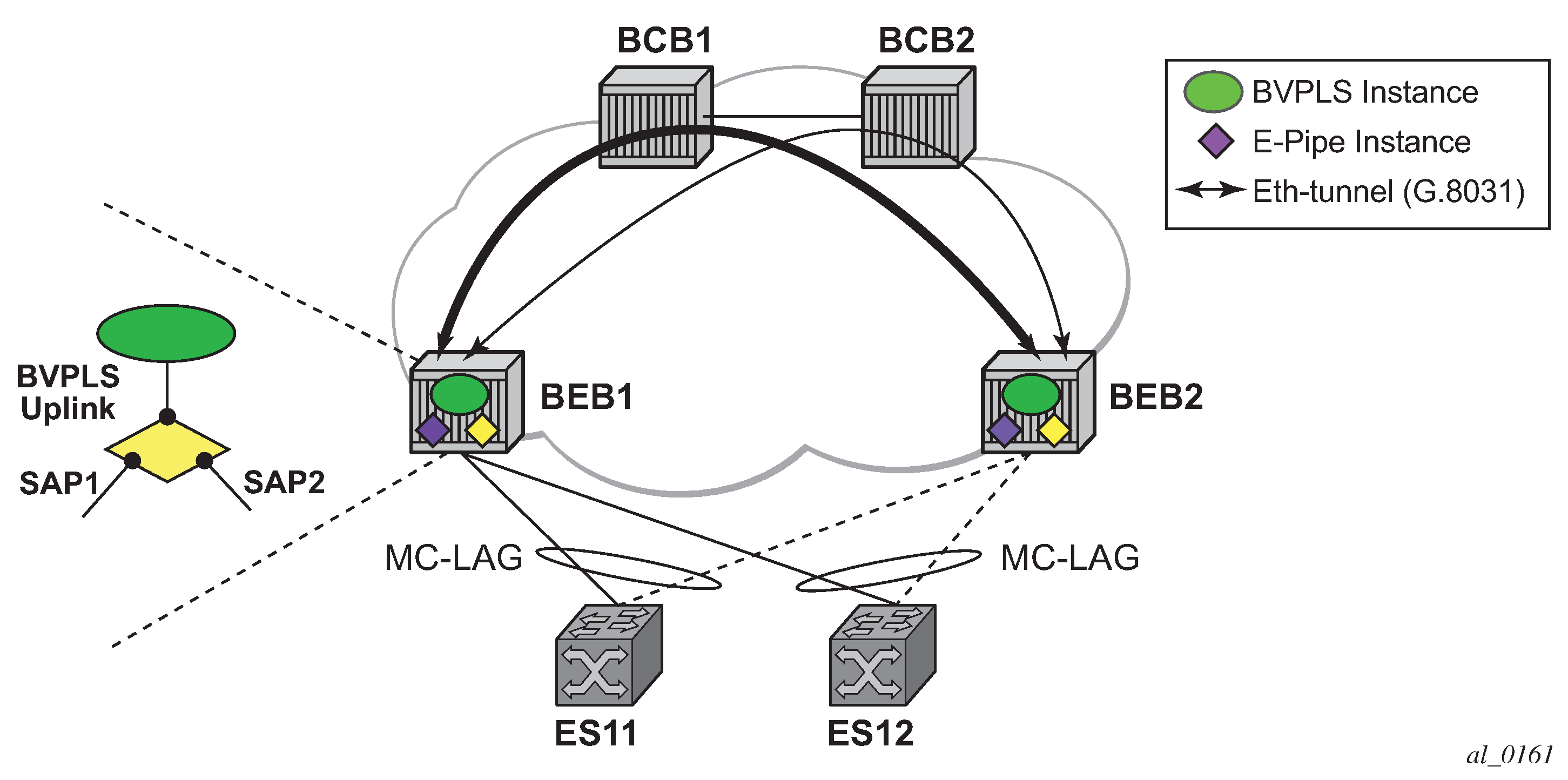When the service SAPs were mapped to MC-LAGs belonging to the same pair of BEBs in earlier releases, an IVPLS had to be configured even if there were just two SAPs active at any point in time. Since then, the PBB Epipe model has been enhanced to support configuring in the same Epipe instance two SAPs and a BVPLS up link as depicted in Figure 1.

The PBB Epipe represented by the yellow diamond on BEB1 points through the BVPLS up link to the B-MAC associated with BEB2. The destination B-MAC can be either the address associated with the green BVPLS on BEB2 or the B-MAC of the SAP associated with the pair MC-LAG on BEB2 (preferred option).
The Epipe information model is expanded to accommodate the configuration of two SAPs (I-SAPs) and of a BVPLS up link in the same time. For this configuration to work in an Epipe environment, only two of them are active in the forwarding plane at any point in time, specifically:
SAP1 and SAP2 when both MC-LAG links are active on the local BEB1 (see Figure 1)
The Active SAP and the BVPLS uplink if one of the MC-LAG links is inactive on BEB1
PBB tunnel is considered as a backup path only when the SAP is operationally down.
If the SAP is administratively down, then all traffic is dropped.
Although the CLI allows configuration of two SAPs and a BVPLS up link in the same PBB Epipe, the BVPLS up link is inactive as long as both SAPs are active.
The traffic received through PBB tunnel is dropped if BVPLS up link is inactive.
The same rules apply to BEB2.